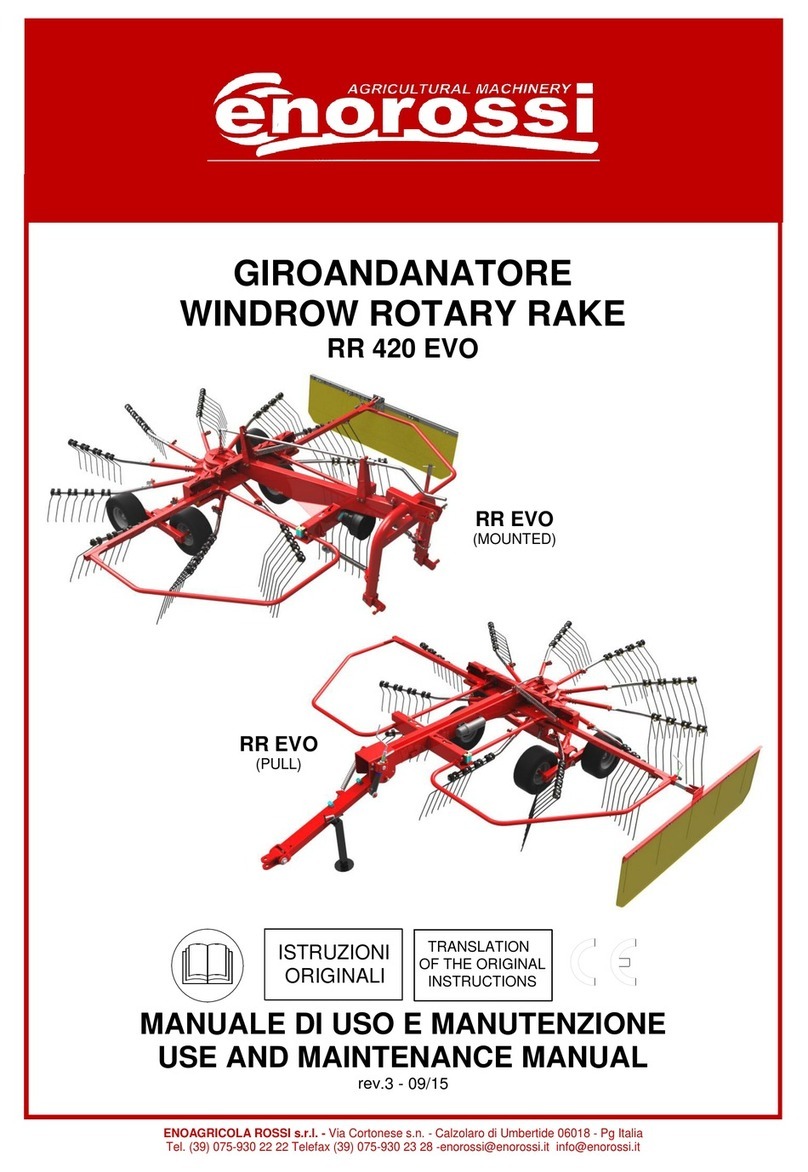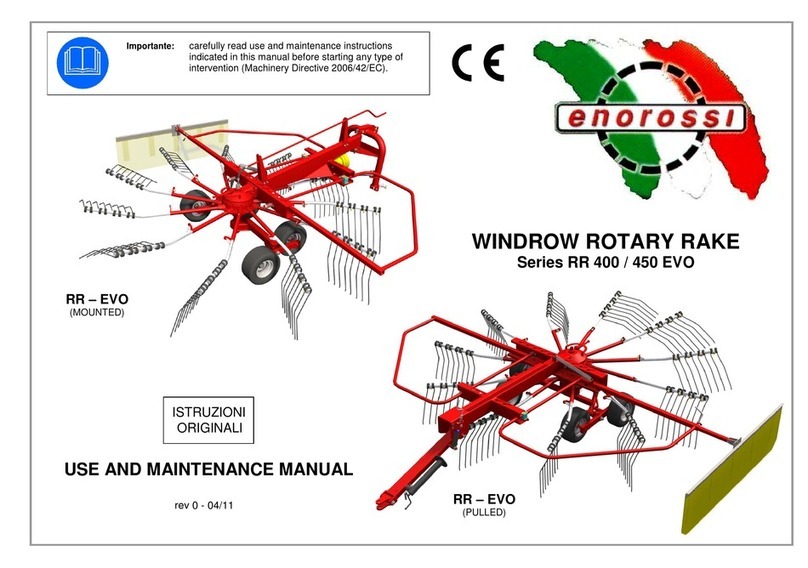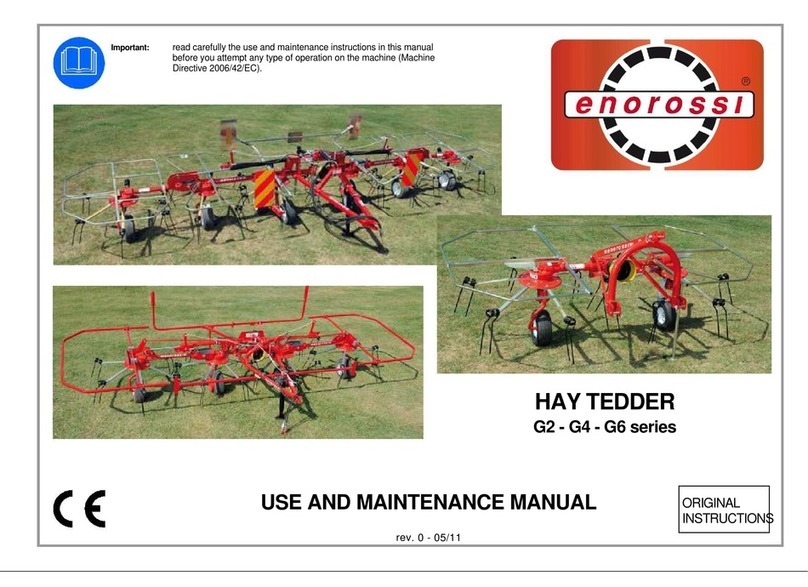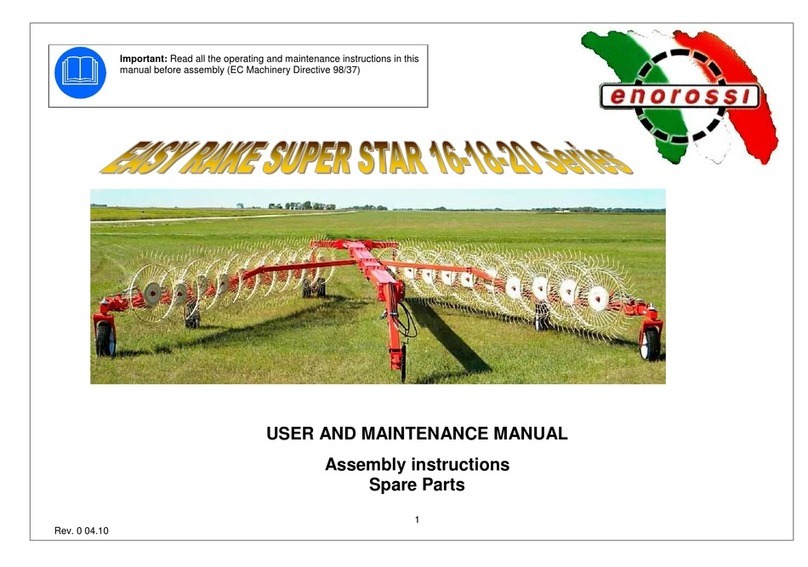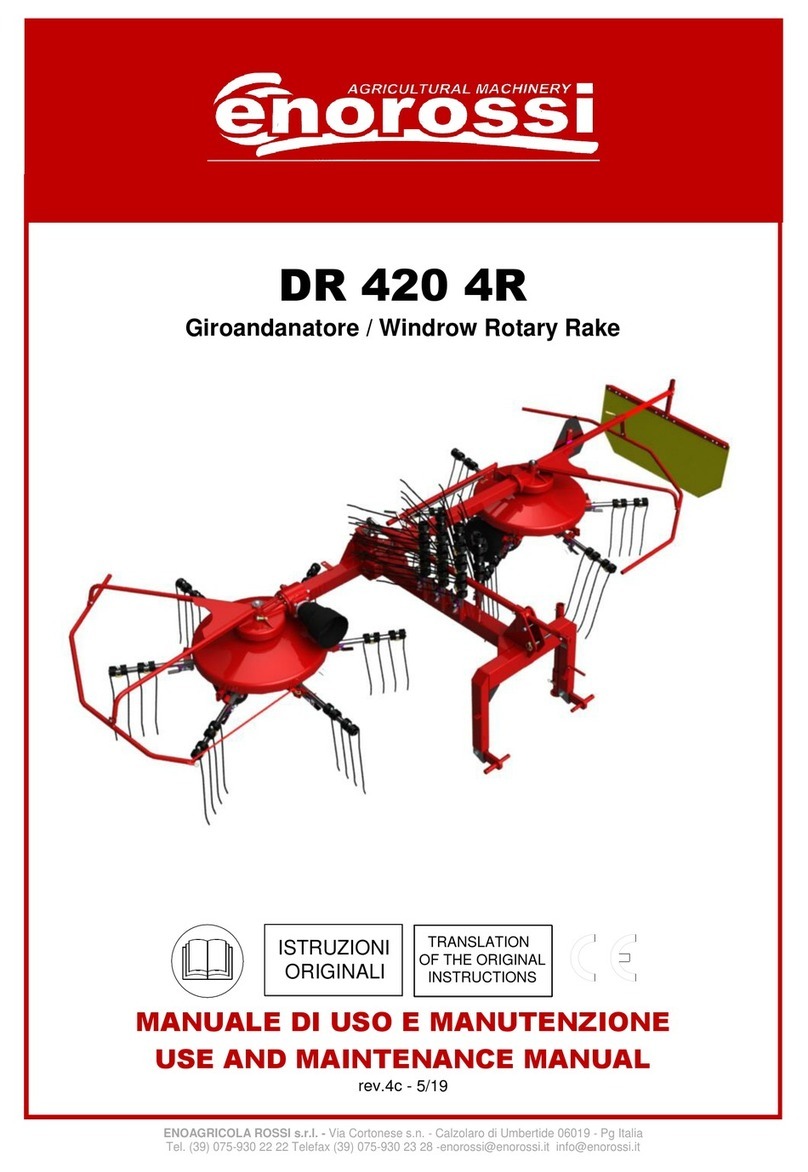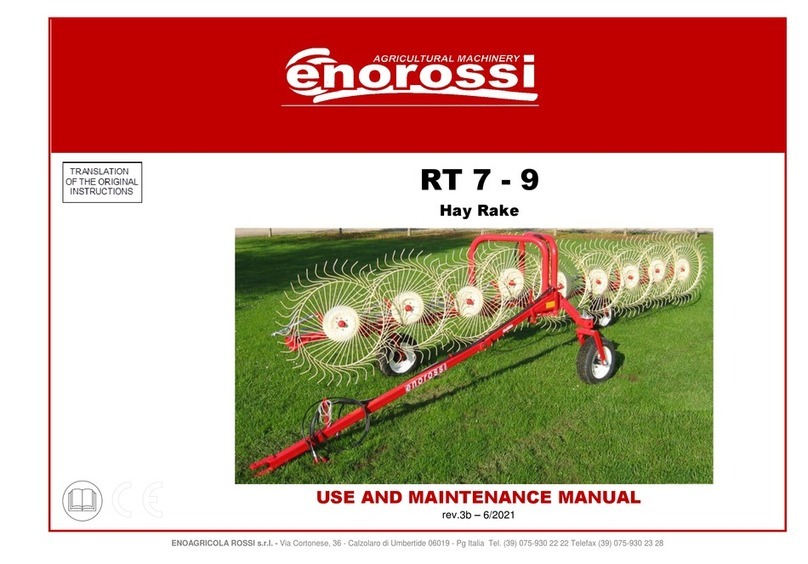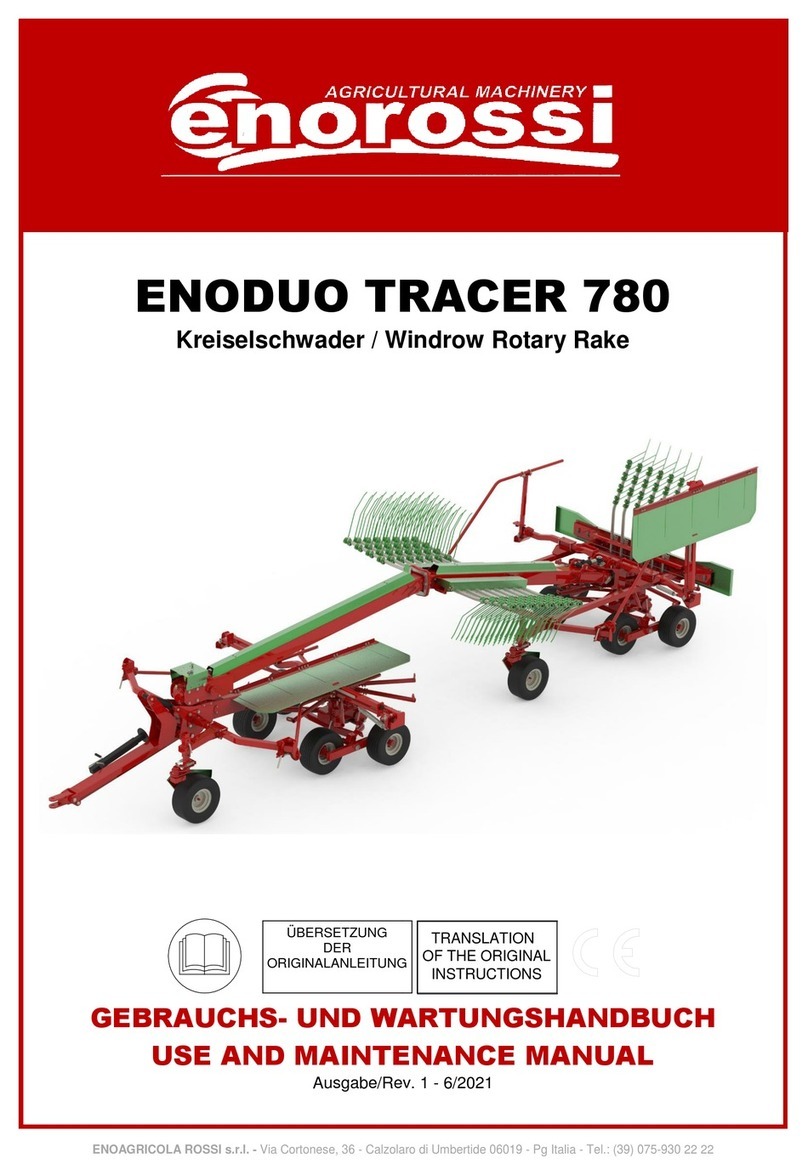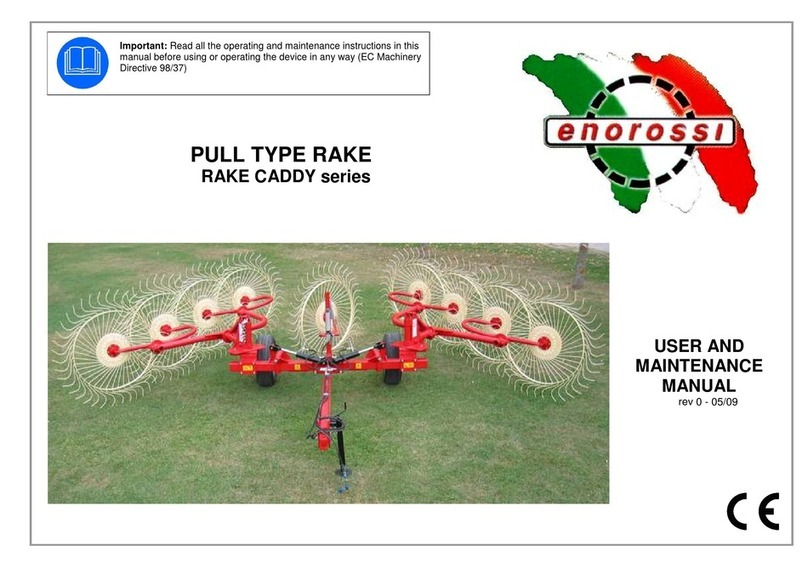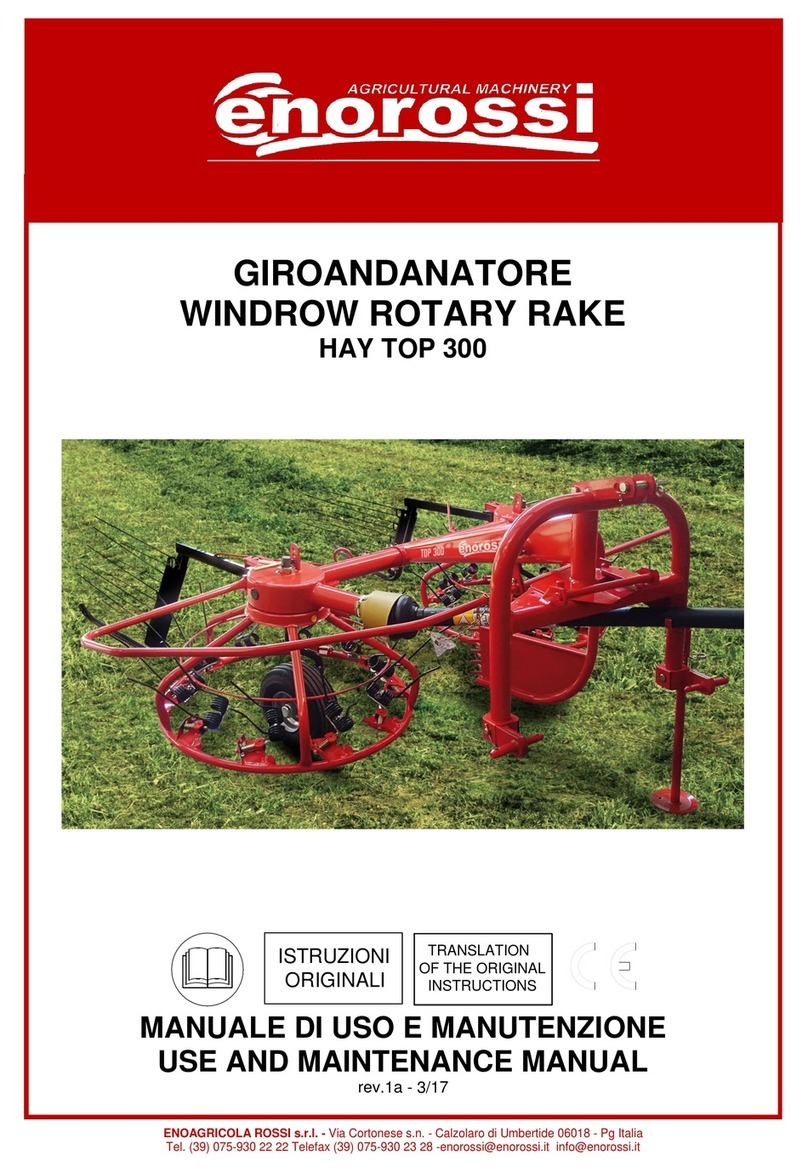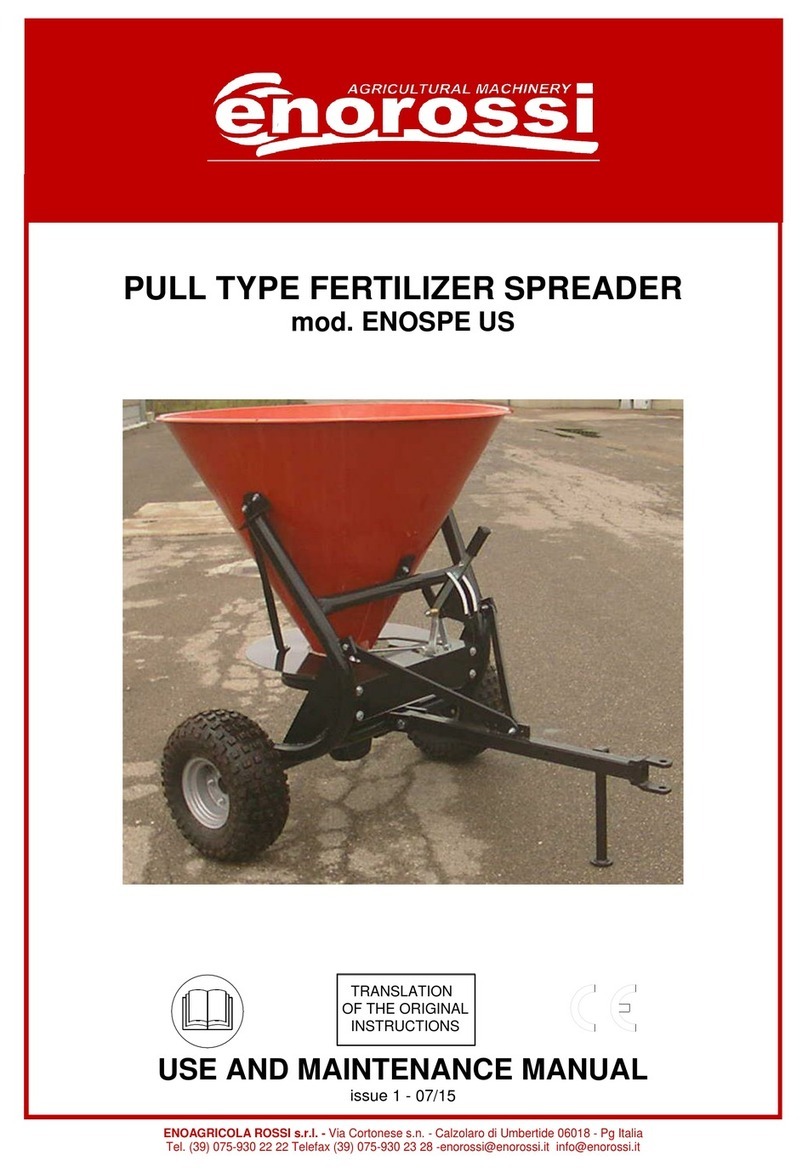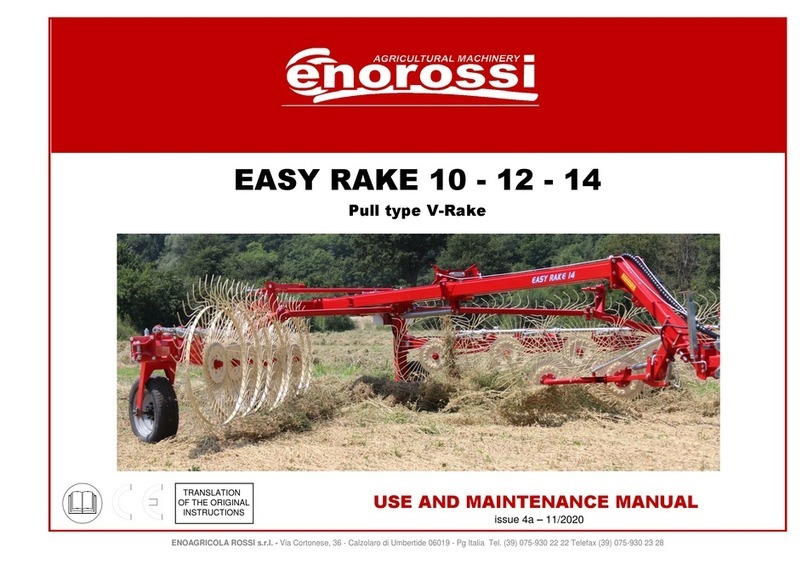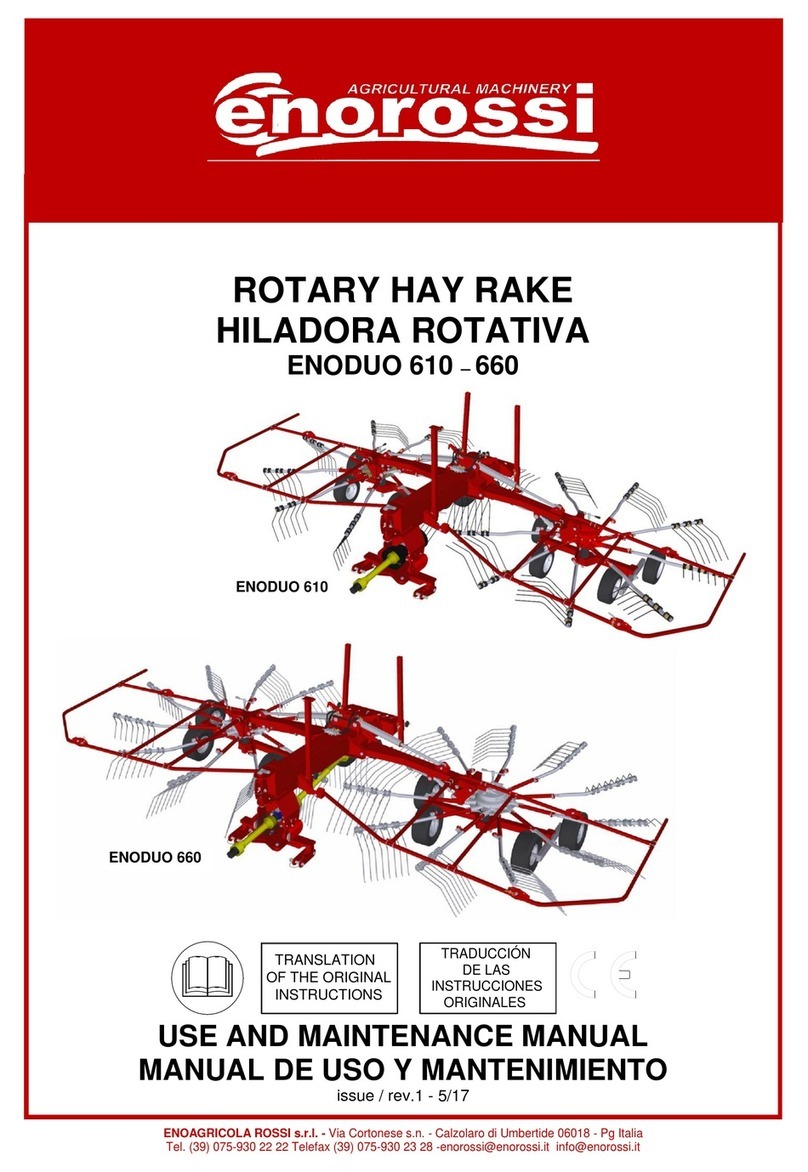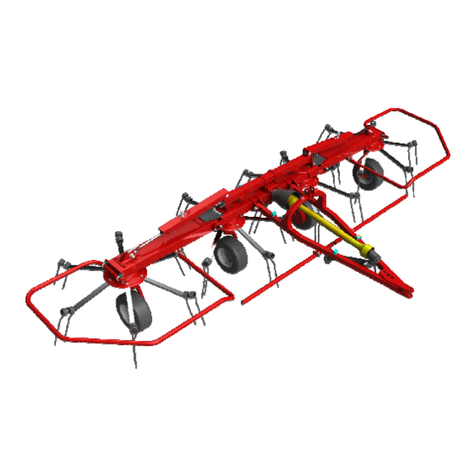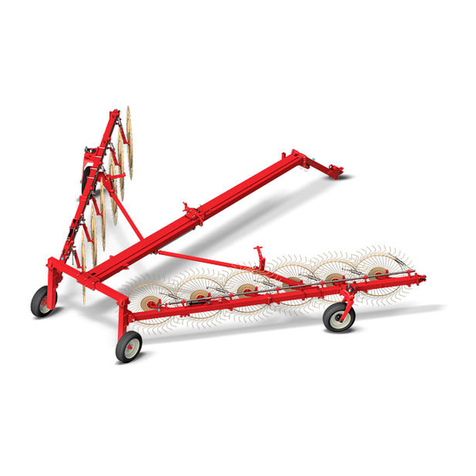
5
INTRODUZIONE
Informazioni sul manuale
La ditta ENOROSSI (di seguito denominata
“Fabbricante”) ha progettato e realizzato l’attrezzatura
nel rispetto di appropriate norme di sicurezza con il
preciso intento di salvaguardare sia il personale che vi
opera intorno che l’intero sistema operativo.
Ogni ranghinatore viene fornito di una copia di questo
manuale, che deve essere letto attentamente prima
che lo stesso venga utilizzato. Nel manuale sono
contenute le informazioni necessarie per il trasporto,
l’impiego e la manutenzione dell’attrezzatura nonché le
relative norme di sicurezza.
La mancata conoscenza del suo sistema operativo
potrebbe provocare incidenti, con conseguenti danni
alla stessa attrezzatura. Pertanto, anche se al
momento della consegna il Fabbricante fornisce al
Cliente tutte le informazioni relative al ranghinatore
(funzionamento, uso e manutenzione), questi è tenuto,
comunque, a leggere il presente manuale e ad
osservare le istruzioni in esso contenute.
Il manuale fornisce le indicazioni di base per ottenere
le migliori condizioni di lavoro e di sicurezza ma resta
comunque l'esperienza ed il buon senso dell'operatore
il fattore più importante per il funzionamento
dell’attrezzatura. La stesura del manuale è stata
eseguita in base alle caratteristiche tecniche e
costruttive degli attuali modelli di ranghinatore e non
tiene conto dei modelli simili prodotti in precedenza.
Tuttavia, il Fabbricante si riserva il diritto di apportare
modifiche ai modelli in produzione, al fine di
migliorarne il prodotto o qualora venissero emanate
nuove disposizioni in materia (Direttiva Macchine),
senza l’obbligo di adeguare i modelli costruiti in
precedenza.
Il presente manuale costituisce parte integrante del
ranghinatore e, perciò, deve essere bene conservato,
pulito ed integro in tutte le sue parti e custodito in un
apposito contenitore, posto sul telaio dell’attrezzatura
o all’interno della cabina del trattore, pronto per ogni
consultazione.
In caso di cessione del ranghinatore sarà importante
verificare che il manuale sia presente nella sua
custodia. Nel caso esso fosse andato disperso, sarà
necessario chiederne un duplicato al Fabbricante.
Se durante la lettura del manuale le istruzioni
risultassero incomprensibili, è opportuno contattare il
Fabbricante, che fornirà gli opportuni chiarimenti.
Qualora il manuale fosse tradotto in un’altra lingua e
parte del suo contenuto dovesse dare adito a
controversie, il testo valido di riferimento rimane quello
scritto in lingua italiana.
INTRODUCTION
Information about the manual
ENOROSSI (hereinafter named "Manufacturer") has
designed and built the equipment in compliance with
the safety regulations and with the precise intent of
protecting both the working personnel and the entire
operating system.
Every hay rake is equipped with a copy of this manual,
which should be read carefully before using the
equipment. The manual contains the necessary
information for the equipment transport, use and
maintenance and the corresponding safety regulations.
The lack of knowledge of its operating system could
cause accidents that may cause damage to the
equipment. Therefore, even if upon delivery, the
Manufacturer supplies the Customer with all the
information concerning the hay rake (operation, use
and maintenance), he must, however, read this
manual and follow the contained instructions.
The manual gives the basic guidelines for the best
working conditions and safety, but the operator's
experience and common sense remains the most
important factor for the equipment functioning.
This manual was created according to existing hay
rake models specifications and design and does not
take into account the similar models previously
produced. However, the Manufacturer reserves the
right to make changes to the models in production, in
order to improve the product or where new regulations
were enacted (Machinery Directive), without the
obligation to update the previously built models.
This manual is part of the hay rake and, therefore,
should be kept, clean and intact in all its parts and
stored in a special container, placed on the equipment
frame or inside the tractor cabin, ready for any
consultation.
In case of sale of the hay rake it is important to verify
that the manual is present. If the manual is missing, a
duplicate must be requested to the Manufacturer.
If while reading the manual the instructions are
incomprehensible, you should contact the
Manufacturer, which will provide the necessary
clarifications. If the manual is translated into another
language, and part of its contents lead to disputes, the
valid reference texts remains the one written in Italian.





